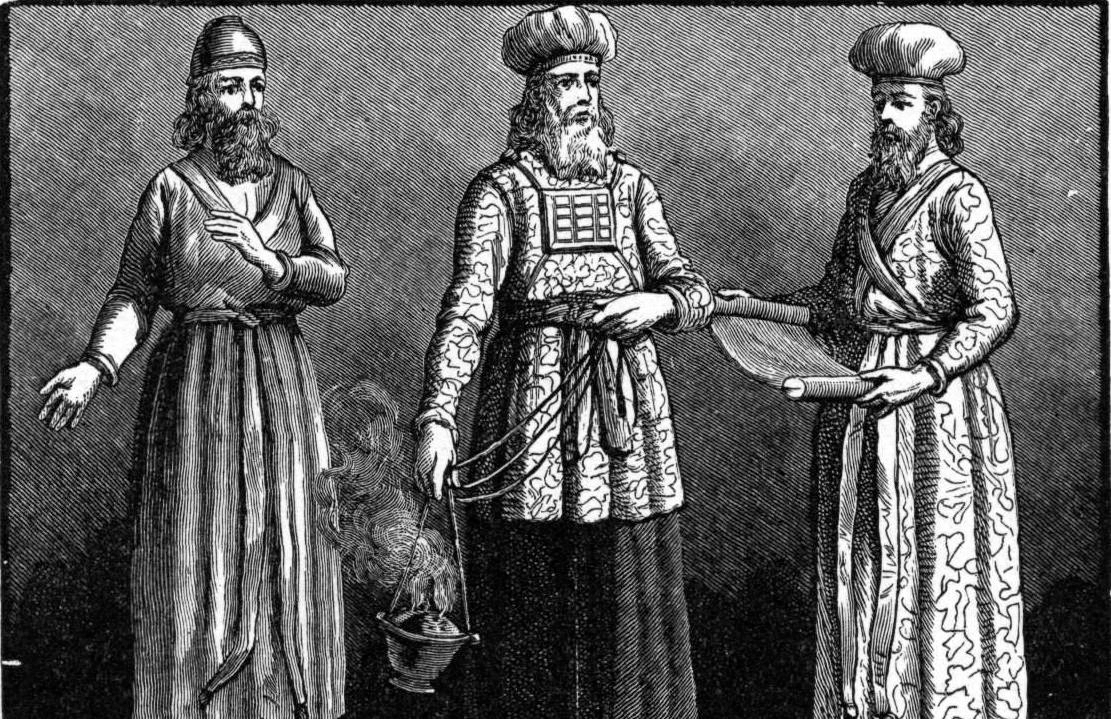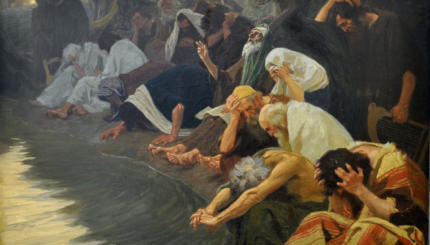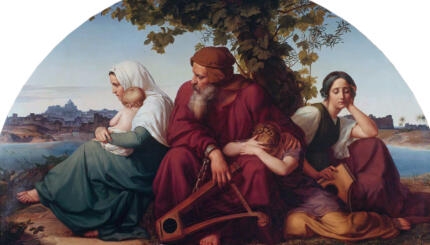Commentary on Parashat Tetzaveh, Exodus 27:20-30:10; Deuteronomy 25:17-19
Admittedly, I am not a big fan of men’s jewelry. Yet, I have always been fascinated by the priest’s breastplate — the choshen mishpat. Perhaps its weight, which can be inferred from the directions for its creation in this week’s portion, reflect the weightiness of decision-making that the priest is forced to undertake as a result of his position in the community.
And the jewels indicate that the entire community (the 12 tribes and their descendents) is impacted by such decisions. And while I am not a big fan of most Torah adornments either, I think about the connection between the Torah and the role of the priest whenever the Torah is removed from the ark–assuming the Torah being used has a breastplate adorning it.
Moving to the Synagogue
By moving from the Temple cult into the synagogue (where the Torah is read to both simulate revelation and stimulate discussion), we have moved the weight of such decisions for the future of the Jewish community into a different context, but its weightiness has not changed.
Thus, the role of the Torah and its words–as indicative of the Divine foundation for our decisions–are extremely important as we consider the future of the Jewish community.

Help us keep Jewish knowledge accessible to millions of people around the world.
Your donation to My Jewish Learning fuels endless journeys of Jewish discovery. With your help, My Jewish Learning can continue to provide nonstop opportunities for learning, connection and growth.
This is the way the text directs the people to fashion the breastplate for the priest: You shall make a breastpiece of decision, worked into a design; make it in the style of the ephod: make it of gold, of blue, purple, and crimson yarns, and of fine twisted linen. It shall be square and doubled, a span in length and a span in width. Set in it mounted stones, in four rows of stones…
The first row shall be a row of carnelian, chrysolite, and emerald; the second row: a turquoise, a sapphire, and an amethyst; the third row: a jacinth, an agate, and a crystal; and the fourth row: a beryl, a lapis lazuli, and a jasper. They shall be framed with gold in their mountings. The stones shall correspond [in number] to the names of the sons of Israel: twelve, corresponding to their names. They shall be engraved like seals, each with its name, for the twelve tribes (Exodus 28: 15-21).
But the text is not satisfied with a description of the breastplate or the ephod. It continues by describing an important additional item:
“You shall make a frontlet of pure gold and engrave on it the seal inscription: ‘Holy to .’ (Exodus 28:36)
If the Israelite community–the Jewish people–are to be a “nation of priests,” as it says previously in Exodus 19:6, then we are required to mimic the activities and garments of the priests.
I recognize that the priests had a special responsibility and a special relationship with God, identified as “holy,” but everyone can enjoy such a relationship, priest or not. Perhaps the sign that they were to wear–concretized in part in the that is now placed on our foreheads temporarily but probably worn all day at a previous time–is a reminder that all of us, whoever we are in the community, old-timer or newcomer, are indeed holy to God.
The priest in all of us must remember this as we make the weighty decisions about the future and the community we are trying to create.




